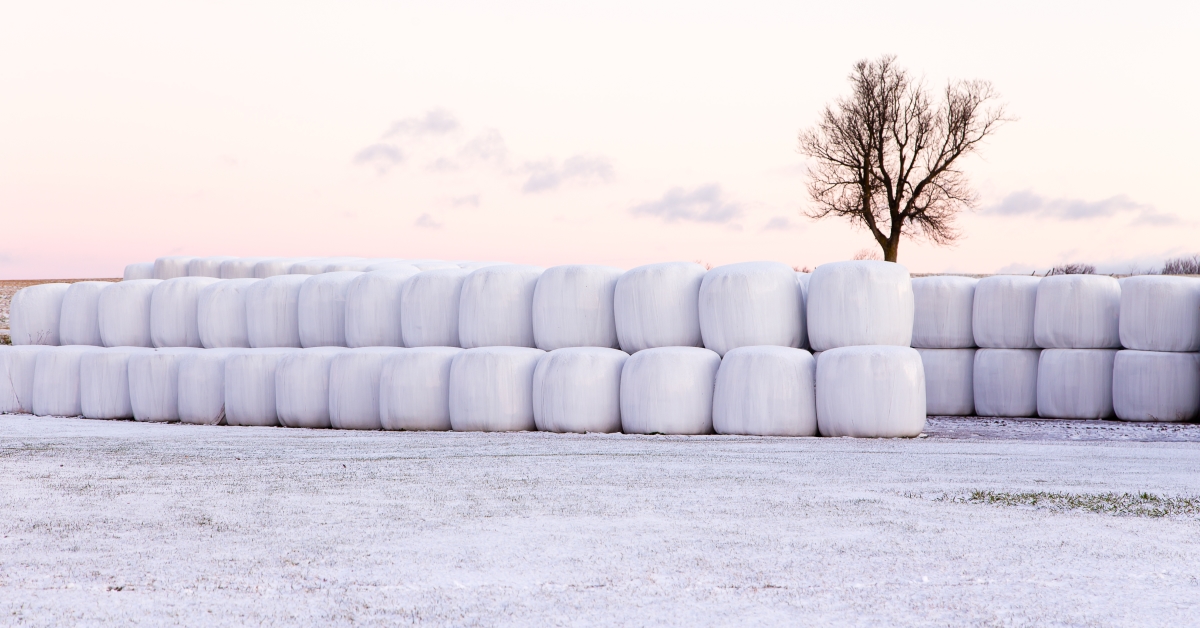Moisture and it's Role in Fermentation
Jan 22, 2024

By Ben Jensen, Hubbard Feeds. Reprinted with Permission.
Silage, and the fermentation process to make the plant into silage, is an odd piece of the farm by today’s standards. Technology and competition continue to drive the industry, making us better and more productive even with less resources to feed a growing world. Progress is measured with benchmarks over time, and silage is flat-out hard to measure. The end product has so many variables and qualities to measure, it makes sense that evaluating silage is less than precise.
Water, the source of all life, has an enormous influence on fermentation and consequently on feed quality. Fermentation, just one of the steps along the silage-making path, can have numerous outcomes. Water — or, more precisely, whole-plant moisture — is the number-one influencer of whether you can expect high-quality feed for the year. Other factors, such as hybrid selection, chop length and storage sizing, contribute to feed quality as well, but proper plant moisture has no substitute.
What can happen when too much plant moisture is present while making silage?
- High dry matter (DM) loss – Tonnage losses can happen in the form of leachate. This highly concentrated seepage out of the bottom of the silage is feed quality running away within excess water, which pulls highly digestible carbohydrates and protein from the silage. This highly concentrated nutritious liquid is also extremely dangerous to groundwater, contaminating tens of thousands of gallons with very little volume. This makes it a priority to catch the flow as close to the source as possible.
- Increased buffering capacity – Silage becomes stable with a low pH, which is accomplished through acid production. Dropping the pH of the feed requires extra acid production to overcome the abundance of water left in the feed. Alfalfa already has a high buffering capacity, and with added moisture above 65%, it takes a lot of acid to lower the pH.
- Butyric acid – A clostridial and butyric acid fermentation most often occurs in wet silage when stronger acids like lactic acid cannot drop the pH fast enough and butyric and acetic acid are produced in abundance by clostridia bacteria. Not only is the feed substantially degraded, but the butyric acid suppresses intake.
An indication of clostridial fermentation, if not recognized by the strong smell, is a forage test indicating butyric acid at >.5% DM.
An example of butyric fermentation in legume haylage:
- Moisture – 65.72%
- pH – 5.99
What can happen when too little plant moisture is present at the time of harvest?
- Decreased pack density – Drier-than-normal silage acts like a sponge; when you try to pack it, it springs back. With less-than-ideal moisture conditions, more weight is needed to accomplish the same packing density, although even with the addition of extra weight, density rarely meets target levels. Low-density storage means more oxygen and less stability at feed-out.
- Increased oxygen levels – Unlike abnormally wet silage, where acid production competes with large volumes of water, dry silage battles an extended period of oxygen presence, during which yeasts and molds can grow rapidly. This is largely due to reduced pack density, where larger pockets of oxygen are trapped. Phase one of fermentation (oxygen removal) will be prolonged as the oxygen is consumed. During this time, a higher level of heating occurs, and valuable nutrients are used to fuel the growth of both beneficial and harmful bacteria, including yeasts and molds. At feed-out, these yeasts and molds begin to grow again, resulting in heating silage and TMR mixes and, consequently, lower intakes.Below is a basic comparison from two Dairyland Labs corn silage samples, where one is wet (above 68% moisture) and the other dry (below 62% moisture). The dry corn silage has very little acid production, at 3.67% total silage acids, compared to 9.15% in the wet corn silage. Consequently, pH is higher in the drier feed.
Dry Corn Silage
Proper plant moisture at harvest ultimately determines the quality of fermentation, and being on either side of the moisture goal can have significant effects on silage quality. Many believe that with proper moisture and efficient fermentation, digestibility will increase. Starch digestion, and the rate at which starch breaks down, is well documented to improve over time while in storage; this is easily measured with a feed test.
However, total neutral detergent fiber (NDF) — the measure of total fiber within the forage — and digestion rate have little to do with fermentation. A good fermentation does not hinder digestibility, but it also does little to improve it. The level of fiber and how it is utilized in the animal is determined in the field and is dependent almost entirely on weather, but also on hybrid selection and age at harvest. NDF tends to increase in hot, dry years, while the rate of digestion increases. Wet and cold conditions favor lower total NDF levels but make the forage less digestible. Some forage treatments are advertised as improving digestibility, but results are not likely to change the feed quality to the point of being easily measured.
In short, whole-plant moisture has an enormous influence on fermentation of the feed and on feed quality, and you should always make it a priority to test for moisture content before harvest.
This is the time of year when stored feed is starting to be fed and animal performance on that feed is coming to reality. Whether animal performance is good or bad, now is the time to consider an After Harvest Forage Evaluation as plans start to be discussed for next year. Ask your local Hubbard representative how Bulletproof® forage treatments can be key to keeping performance high even in less-than-perfect harvest conditions.